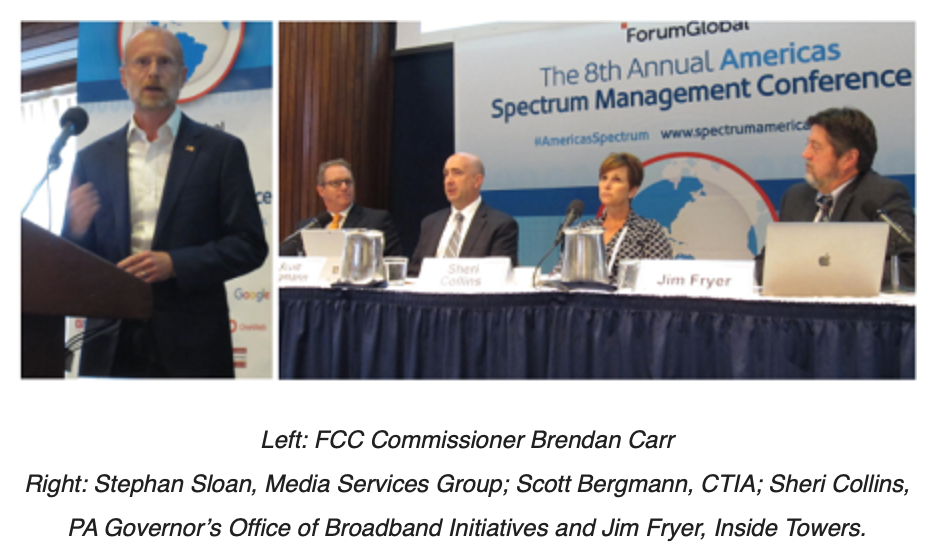During a discussion, at the Americas Spectrum Management Conference in D.C., of how successful efforts have been to streamline wireless infrastructure siting Wednesday, FCC Commissioner Brendan Carr ticked off what he considers to be wins. Lots of things “will ride the 5G wave,” including a jump from 60,000 small cells built in the U.S. in 2018 to 200,000 this year.
5G has generated a boom in certain industries already, according to Carr, who pointed to a manufacturing plant in Texas that doubled its pole production. In Montana, a company that makes harnesses for tower climbers is seeing an uptick in demand as well, according to the Commissioner.
He noted there are roughly 20,000 tower technicians today and said “the industry can absorb about 20,000 more.”
28 states and Puerto Rico have enacted their own small cell streamlining bills. “That’s enabled us to compete with China on a more level playing field,” Carr said. After seeing America’s success with 4G, China is competing on 5G deployment, said Carr.
Carr’s keynote was the precursor to a panel discussion on wireless infrastructure siting, specifically the challenges of working with state and local governments to gain access to rights-of-way.
CTIA SVP Regulatory Affairs Scott Bergmann said 350,000 new jobs would be directly related to the advent of 5G. “Last year we had about 150,000 towers, and now we hear about 800,000 small cells are to be deployed by 2026. Our challenge is figuring out how to do that as quickly as we can.”
“In many communities the process has worked well, but in others, we’ve often found its hard getting access to rights-of-way and often found that there were fees that exceeded,” what was reasonable, said Bergmann. He credited the FCC’s small cells order from a year ago to modernize small cell siting and have remedies in place for when the process breaks down. It says: “you can’t just say ‘no’” to a siting application, he explained. CTIA continues to speak with the FCC on ways to further update national guidelines. CTIA and the Wireless Infrastructure Association recently petitioned the Commission to clarify and update rules to upgrade towers and utility poles for 5G.
But in many cases municipalities are challenging the FCC’s small cell order, especially the $270 limit per site, saying they need to have their costs covered. Inside Towers Managing Editor Jim Fryer shared a story the publication covered in which the city of Rochester, NY wanted $15,000 per tower. Verizon sued the city. “Whereas Syracuse was more open. They’re right in line with FCC guidelines of $270 per pole and a lowered application fee,” Fryer said. “Now, Syracuse is well on its way to a 5G future, while Rochester is still battling it out in court.”
Sheri Collins, Acting Executive Director, Pennsylvania Governor’s Office of Broadband Initiatives, said she hears the siting arguments from all sides-including the providers’ and localities’ points of views. “The FCC order provides for one thing but then some municipalities are looking to take away zoning authority.”
In her state, the Consumer Affairs Committee planned to vote on a streamlining bill in June, but now the effort is stalled. “We can talk about GDP all we want, but we get stalled in these conversations because everyone always has an agenda.” Legislators are trying to address the challenges and move the bill forward, she added.
“All politics are local. You need to go into these communities and offer solutions that will work for that area,” Collins advised.
September 26, 2019





Reader Interactions